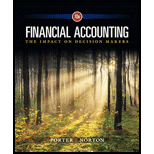
Concept explainers
Read each definition below and write the number of the definition in the blank beside the appropriate term. The quiz solutions appear at the end of the chapter.
Event
External event
Internal event
Transaction
Source document
Account
Chart of accounts
General ledger
Debit
Credit
Double-entry system
Journal
Posting
Journalizing
General journal
- A numerical list of all accounts used by a company.
- A list of each account and its balance; used to prove equality of debits and credits.
- A happening of consequence to an entity.
- An entry on the right side of an account.
- An event occurring entirely within an entity.
- A piece of paper that is used as evidence to record a transaction.
- The act of recording
journal entries. - An entry on the left side of an account.
- The process of transferring amounts from a journal to the ledger accounts.
- An event involving interaction between an entity and its environment.
- A record used to accumulate amounts for each individual asset, liability, revenue, expense, and component of stockholders’ equity.
- A book, a file, a hard drive, or another device containing all of the accounts.
- A chronological record of transactions.
- Any event that is recognized in a set of financial statements.
- The journal used in place of a specialized journal.
- A system of accounting in which every transaction is recorded with equal debits and credits and the
accounting equation is kept in balance.
Concept Introduction:
Accounting is art of recording, classifying and summarizing the business transaction or business event it also communicates or interpretation the result to the users of accounting.
Journal entries are the part of basic accounting or primary accounting. In journal entries there are 2 aspects one is debit and another is credit. These 2 aspects are always equal. Journal entries are base for the ledger and trial balance.
To Identify: Fill in the blanks with appropriate headings.
Explanation of Solution
| 1. A numerical list of all the accounts used by the company. | It is termed as the ledger. |
| 2. A list of accounts and its balances used to prove equality of debit and credit. | It is termed as the Trial balance. |
| 3. A happening of consequence to an entity. | It is termed as the Event. |
| 4. An entry on the right side of an account. | It is termed as the Credit. |
| 5. An event occurring entirely within an entity. | It is termed as Internal Event. |
| 6. A piece of paper that is used as evidence to record a transaction. | It is termed as Source document. |
| 7. The act of recording the journal entry. | It is termed as journalizing. |
| 8. An entry on the left side of an account. | It is termed as Debit. |
| 9. The process of transferring the amounts from a journal to the ledger accounts. | It is termed as posting. |
| 10. An event involving interaction between an entity and its environment. | It is termed as external event. |
| 11. A record used to accumulate amounts for each individual asset, liability, revenue, expense, and component of stockholders’ equity. | It is termed as general ledger. |
| 12. A book, a file, a hard drive, or another device containing all of the accounts. | It is termed as Account. |
| 13. A chronological record of transaction. | It is termed as Journal. |
| 14. Any event that is recognized in a set of financial statements. | It is termed as Transactions. |
| 15. The journal used in place of a specialized journal. | It is termed as General Journal. |
| 16. A system of accounting in which every transaction is recorded with equal debits and credits and the accounting equation is kept in balance. | It is termed as Double entry System. |
Want to see more full solutions like this?
Chapter 3 Solutions
Financial Accounting: The Impact on Decision Makers
- Hello tutor please provide correct answer general accounting question with correct solution do fastarrow_forwardI want to this question answer for General accounting question not need ai solutionarrow_forwardPlease given correct answer for General accounting question I need step by step explanationarrow_forward
 Financial Accounting: The Impact on Decision Make...AccountingISBN:9781305654174Author:Gary A. Porter, Curtis L. NortonPublisher:Cengage LearningPrinciples of Accounting Volume 1AccountingISBN:9781947172685Author:OpenStaxPublisher:OpenStax College
Financial Accounting: The Impact on Decision Make...AccountingISBN:9781305654174Author:Gary A. Porter, Curtis L. NortonPublisher:Cengage LearningPrinciples of Accounting Volume 1AccountingISBN:9781947172685Author:OpenStaxPublisher:OpenStax College Financial AccountingAccountingISBN:9781337272124Author:Carl Warren, James M. Reeve, Jonathan DuchacPublisher:Cengage Learning
Financial AccountingAccountingISBN:9781337272124Author:Carl Warren, James M. Reeve, Jonathan DuchacPublisher:Cengage Learning College Accounting, Chapters 1-27AccountingISBN:9781337794756Author:HEINTZ, James A.Publisher:Cengage Learning,
College Accounting, Chapters 1-27AccountingISBN:9781337794756Author:HEINTZ, James A.Publisher:Cengage Learning, College Accounting (Book Only): A Career ApproachAccountingISBN:9781337280570Author:Scott, Cathy J.Publisher:South-Western College Pub
College Accounting (Book Only): A Career ApproachAccountingISBN:9781337280570Author:Scott, Cathy J.Publisher:South-Western College Pub





